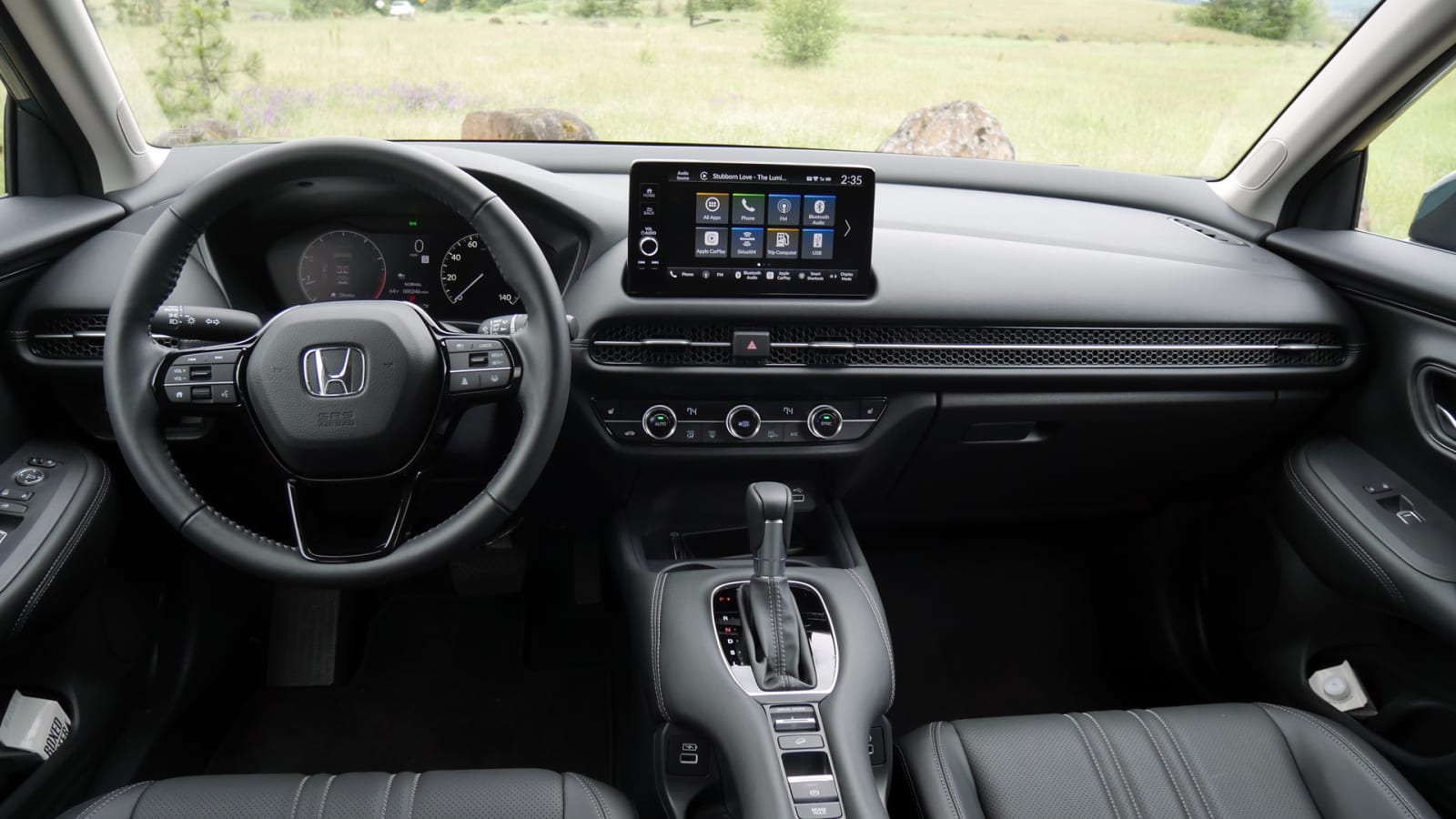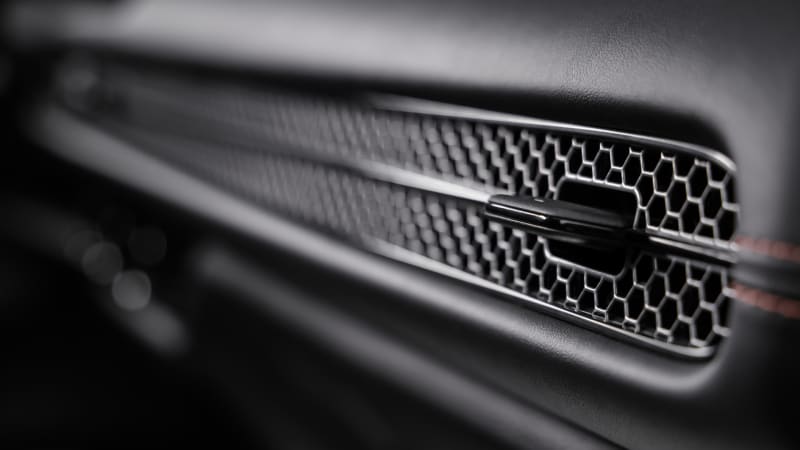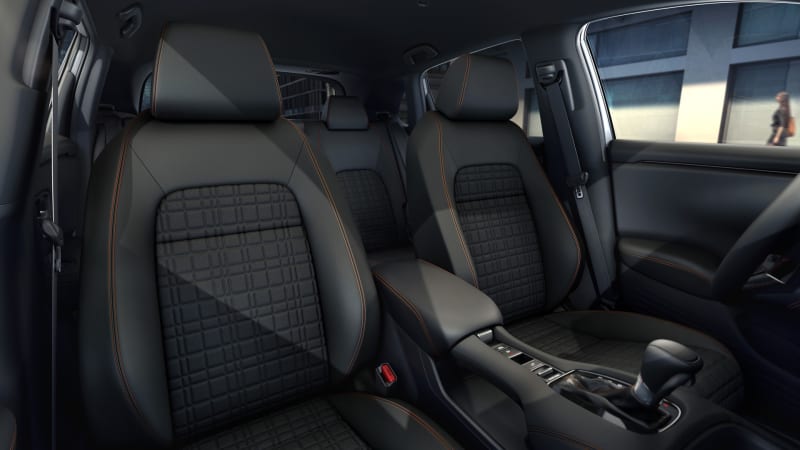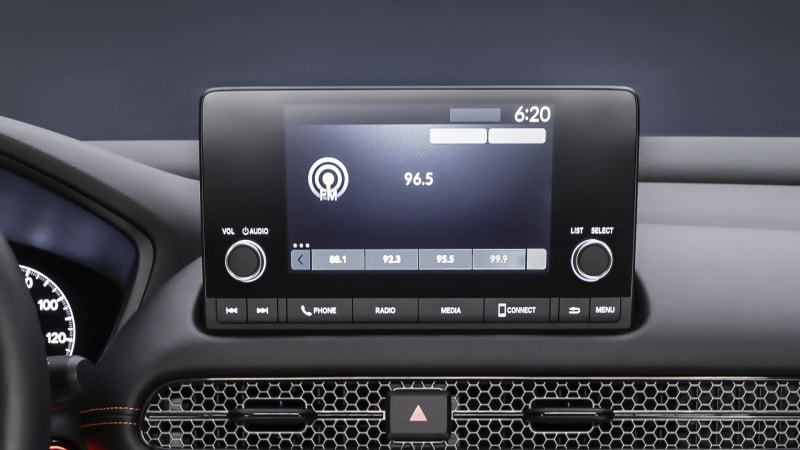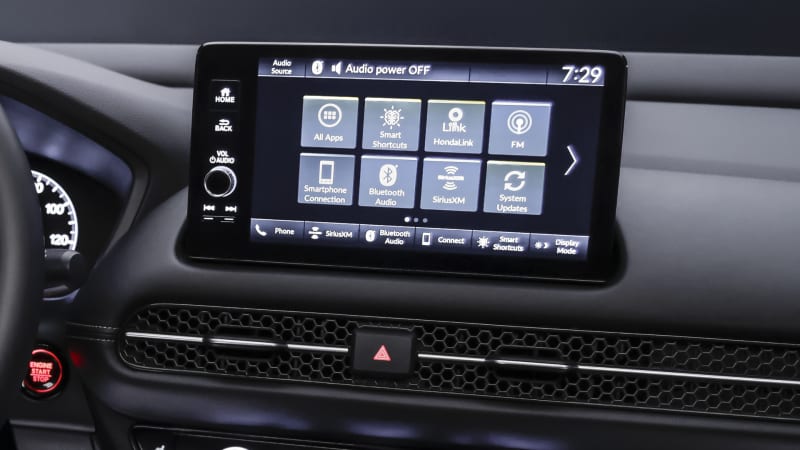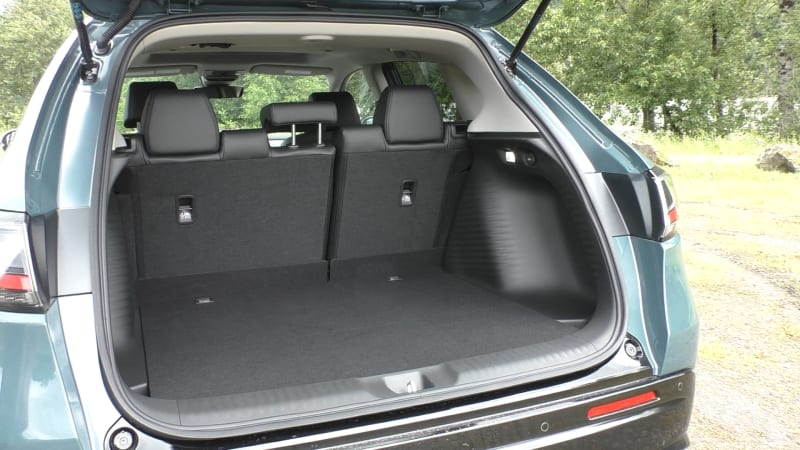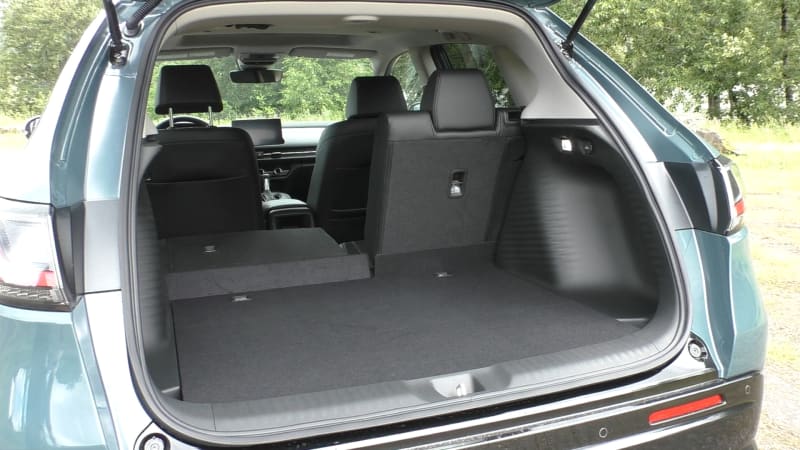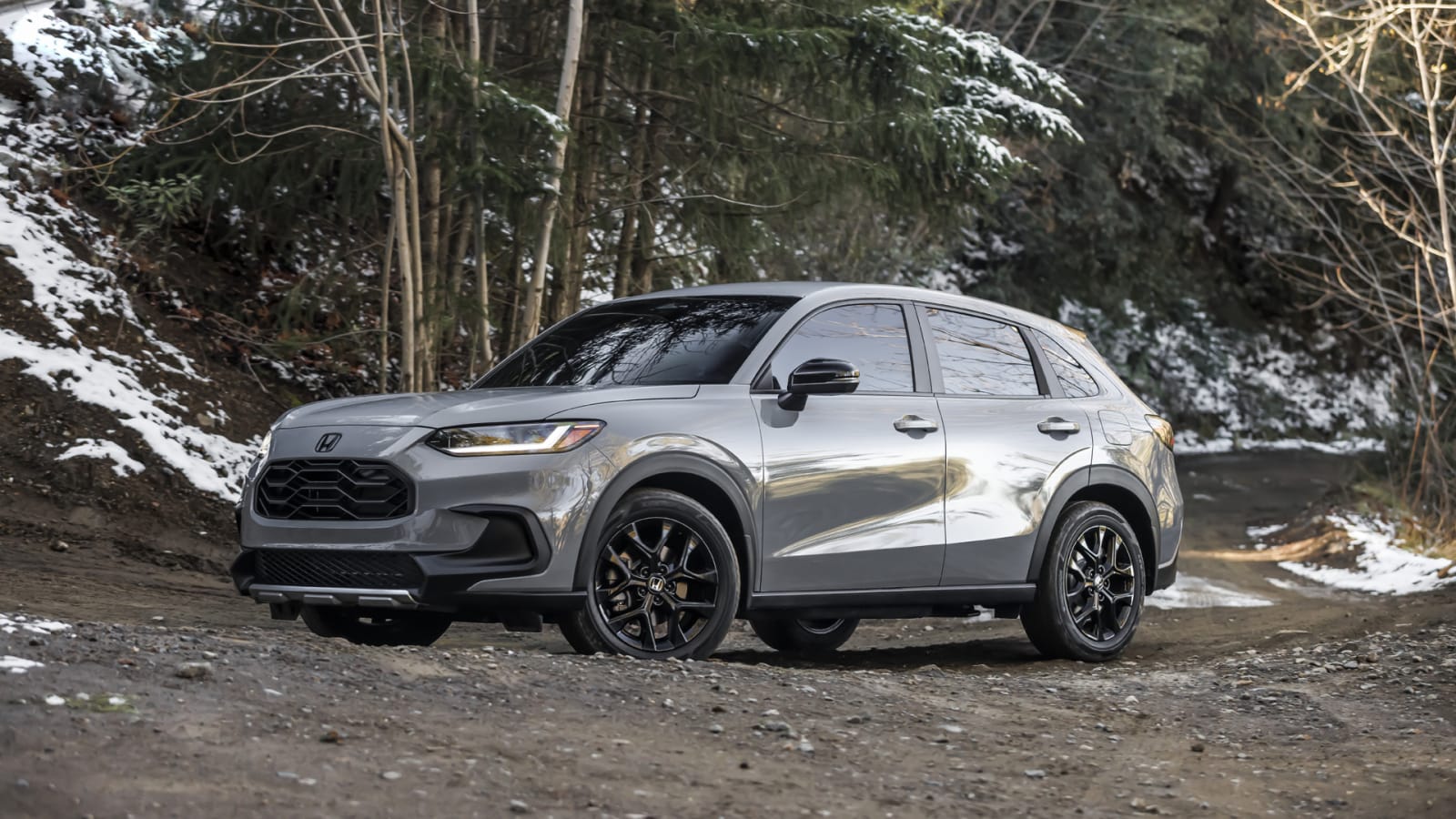2023 Honda HR-V Review: Checks many boxes, pulls few heartstrings
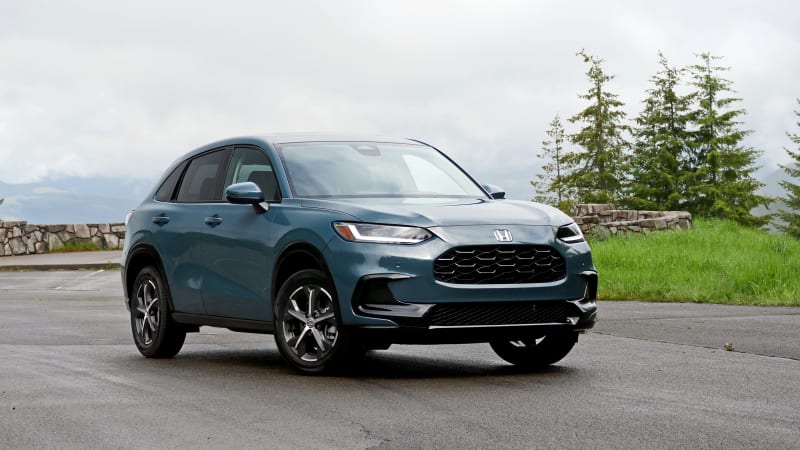
Pros: High-end cabin; it’s basically a big Civic; Honda dependability and resale
Cons: Slow, even by segment standards, without a fuel economy bonus; no sporty or outdoorsy trim levels
The 2023 Honda HR-V is less clever and innovative than the subcompact SUV it replaces. It also doesn’t lean into any one niche of the market as most of its competitors do, such as making a style statement, delivering a sporty driving experience or being well-suited to venturing off the beaten path. The new HR-V is just very conventional. That may make it less interesting, but it’s also easy to see how that’ll make it more appealing to more people. Especially when you consider that most people probably aren’t really looking for their small SUV to be a fashion statement, sporty or particularly adept at finding far-flung camping spots.
Therefore, as simple, dependable transportation for those wanting to sit up high and enjoy some extra versatility, the 2023 HR-V should absolutely deliver. It’s one of the more spacious SUVs in its segment of midcompact SUVs (even if it doesn’t really have any more than its subcompact predecessor, but that’s a long story we go into in our HR-V first drive). It also has a lovely, well-made interior with solid technology, and overall refinement that exceeds most competitors. In that way, it’s an awful lot like the Honda Civic, with which it shares a great deal. Unfortunately, that does not include the Civic’s turbocharged engine upgrade, which the HR-V sure could use – not as a high-performance option, but just to provide sufficient acceleration. The HR-V is quite slow, even by segment standards, and its fuel economy isn’t anything special, either.
Basically, the new HR-V checks off a lot of boxes, but there are also a lot of rivals that might pull on your heartstrings a little stronger.
Interior & Technology | Passenger & Cargo Space | Performance & Fuel Economy
What it’s like to drive | Pricing & Trim Levels | Crash Ratings & Safety Features
What’s new for 2023?
The HR-V is bigger and more conventional than the subcompact SUV pioneer it replaces … so much so that it’s not really a subcompact SUV anymore. It is one of the larger members of a segment we call “midcompact,” while also being more refined and comfortable. It handles better, too. There’s more power, but as it’s heavier, there’s not really a performance enhancement. Finally, Honda’s latest infotainment and safety technology is present, which will probably be the most consequential difference for many buyers.
What are the HR-V interior and in-car technology like?
Apart from the high, floating center console lined in soft-touch pleather that makes its way from the last HR-V (albeit updated), the rest of the cabin’s handsome design and above-average materials are largely in keeping with the new Honda Civic. That’s a great thing. The most obvious Civic cue is the wheel-to-door air vent plated by a metal-look honeycomb pattern. There may come a day when Honda overuses this design element but, for now, it’s exceptional.
The touchscreen (7 inches in LX and Sport, 9 inches in EX-L), are shared with the Civic, and are exponentially better than the outgoing HR-V’s slow, convoluted and just-plain-old touchscreen. Oh, and it has a volume knob and shortcut buttons now. Now, are those screens better than those of the HR-V’s rivals? No, not really, especially when compared to the Kia Seltos. They’re also no longer demonstrably worse. Three USB-A ports also reside in the center console, and the range-topping EX-L trim level gets wireless charging to go with wireless Apple CarPlay and Android Auto capability. Wired versions come standard.
How big is the HR-V?
The HR-V is both bigger and roughly the same size as the SUV it replaces, which is confusing, and if you want to know how and why, we dig into that in our HR-V first drive review. Ultimately, though, the HR-V has moved a half size up the SUV chart to join vehicles that include the Kia Seltos, Volkswagen Taos, Mazda CX-30, Toyota Corolla Cross and Ford Bronco Sport. Passenger space is among the best of that group, and along with the Taos, is one of the more family friendly.
In terms of cargo space, there is 24.4 cubic feet of cargo space (basically the same as before, but again, long story). That’s only mid-pack, with the Seltos, Taos and Bronco Sport having a bit more. They’re also a bit boxier, which should make them easier to load. The HR-V does at least boast a back seat that folds totally flat thanks to a smartly engineered, multi-hinged seat bottom that dips down into the footwell.
What are the HR-V fuel economy and performance specs?
There is only one engine and transmission combo available: a 2.0-liter inline-four good for 158 horsepower and 138 pound-feet of torque that’s connected to a continuously variable transmission. Front- and all-wheel drive are available. Its output is below average for the segment – many of which offer even more powerful upgrades.
EPA-estimated fuel economy comes in at 26 mpg city, 32 mpg highway and 28 mpg combined with front-wheel drive. It falls to 25/30/27 with all-wheel drive. This is actually lower than those more powerful rivals.
What’s the HR-V like to drive?
It’s quite slow, with a dearth of low-end grunt (its piddling 138 pound-feet of torque arrives at a lofty 4,200 rpm). Lay into the throttle and nothing really happens, which is in contrast to the punchy little turbo engines of many competitors. Heck, even the base Subaru Crosstrek engine has more torque – and its customers ultimately convinced Subaru to offer a more powerful upgrade. The CVT does a good job of behaving like a reasonably normal transmission by simulating gears, and even applying engine braking when going downhill when in Sport or Low modes. Should you want to hustle things along, the Sport mode doesn’t really live up to its billing, as it’s too eager to upshift. There are no paddle shifters available.
Beyond the powertrain, the driving experience is impressively refined for the segment. Perhaps it’s the various current-generation CR-V bits and pieces in the suspension, but it does have a more substantial, sophisticated feel. Body roll is kept in decent check and the steering is consistently weighted with commendable response. The ratio is noticeably slower than the Civic’s, though, and working through a winding mountain road required more turning angle than expected. This is in contrast to the Mazda CX-30, which feels almost identical to a Mazda3. There’s definitely a sportier version possible here should Honda choose to go there – ditto one better suited to outdoorsy activities. Its ground clearance is modest at only 7 inches, and there are no roof rails, either.
What other Honda HR-V reviews can I read?
2023 Honda HR-V First Drive
A deeper dive into how the new HR-V differs from its predecessor, plus insights on why those changes were made (and why there’s no turbocharged engine).
What is the 2023 HR-V price?
The 2023 Honda HR-V starts at $24,895 for two-wheel-drive LX, including destination, and tops out at $30,195 for an AWD EX-L. That makes it competitively priced, aligning closely with a Kia Seltos and Subaru Crosstrek. Considering Honda’s well-documented reputation for reliability and resale value, there’s more value to be found than just a low price and well-stocked features list.
The HR-V has a reduced number of trim levels compared to the Honda norm: LX, Sport and EX-L. Besides an increase in equipment, the Sport features slightly different design elements (most notably the handsome textured cloth upholstery and orange stitching). The EX-L is then noteworthy for its leather upholstery, a power driver seat, larger touchscreen and a sunroof.
All prices below include the $1,245 destination charge. All-wheel drive is a $1,500 option for them all.
LX: $24,895
LX AWD: $26,395
Sport: $26,895
Sport AWD: $28,295
EX-L: $28,695
EX-L AWD: $30,195
What are the HR-V safety ratings and driver assistance features?
Every 2023 HR-V includes as standard equipment forward collision warning, automatic emergency braking, lane-departure warning, lane-keeping assist, and adaptive cruise control with stop-and-go capability and lane-centering steering assist. It also includes rear side airbags, which is rare. Blind-spot and rear cross-traffic warning are included on the Sport and EX-L.
The 2023 HR-V had not been crash tested by a third party at the time of this writing.
Related video:
